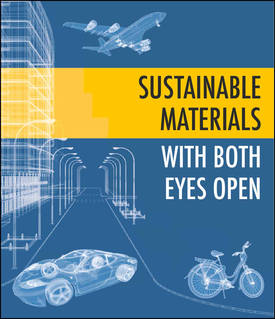 boingboing: Julian Allwood and Jonathan Cullen's Sustainable Materials - with Both Eyes Open: Future Buildings, Vehicles, Products and Equipment - Made Efficiently and Made with Less New Material is a companion volume to Sustainable Energy Without the Hot Air, one of the best books on science, technology and the environment I've ever read.
boingboing: Julian Allwood and Jonathan Cullen's Sustainable Materials - with Both Eyes Open: Future Buildings, Vehicles, Products and Equipment - Made Efficiently and Made with Less New Material is a companion volume to Sustainable Energy Without the Hot Air, one of the best books on science, technology and the environment I've ever read.
We review a lot of popular science books around here, but Sustainable Materials (like Sustainable Energy) is a popular engineering text, a rare and wonderful kind of book. Sustainable Materials is an engineer's audit of the materials that our world is made of, the processes by which those materials are extracted, refined, used, recycled and disposed of, and the theoretical and practical efficiencies that we could, as a society, realize.
...The authors quickly demonstrate that any effort to improve the sustainability of our materials usage must focus on steel and aluminum, first because of the prominence of these materials in our construction and fabrication, and second because they are characteristic microcosms of our other material usage, and what works for them will be generalizable to other materials.
From there, the book progresses to a fascinating primer on the processes associated with these metals, from ore to finished product and back through recycling, and the history of efficiency gains in these processes, and the theoretical limits on efficiency at each stage. Lavishly illustrated and superbly organized, this section and the ones that follow it are a crash course in the invisible energy embodied in the bones of our built up world.
But the primary work of the book is to look at how small (and large) changes in our society and business could make important gains in the sustainability of our material use, an important subject as developing nations start to copy the rich world's insatiable appetite for material goods and titanic cities.
As with Sustainable Energy, Sustainable Materials is a valuable, impartial expert source in an important debate. While it explains the measures that can improve our materials usage, it also lays out the tradeoffs that these measures entails, the the relative benefits to be gained by each trade -- but it doesn't lecture or demand, merely invites the reader to consider the engineering facts and decide for herself what to do about them.
The publisher has put up a great website for the book, with free, downloadable text, and some good supplementary materials.